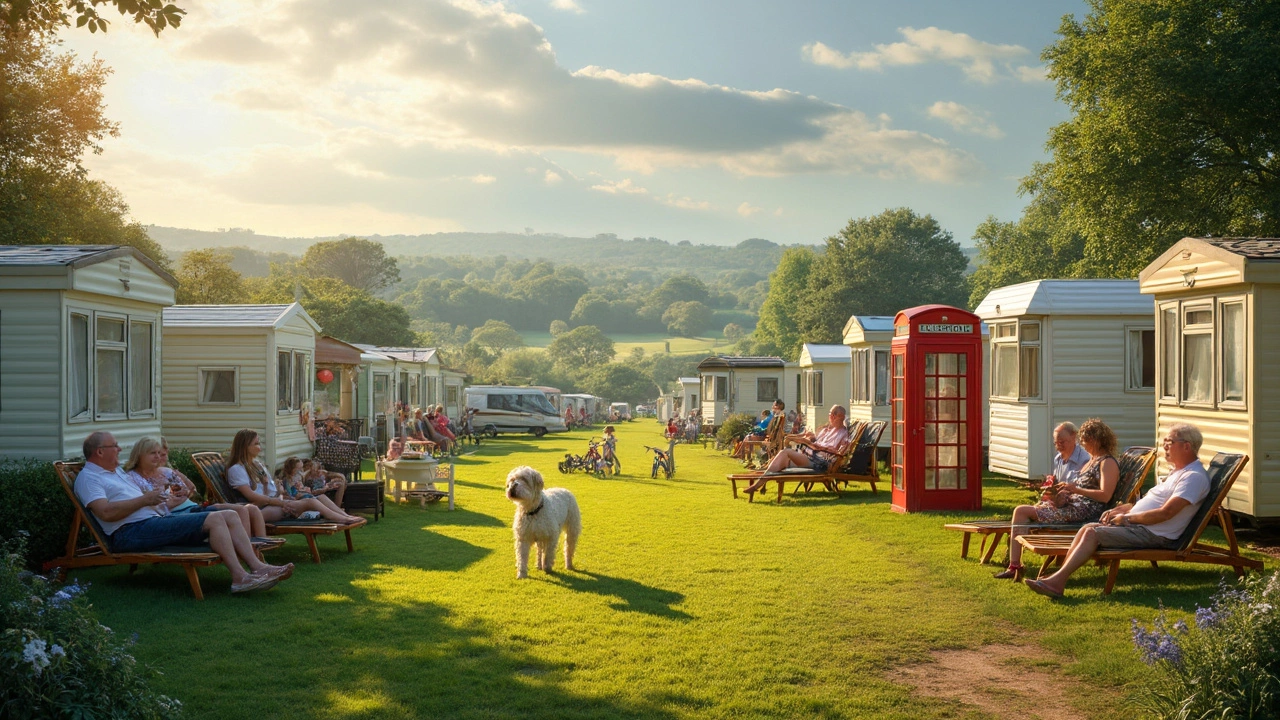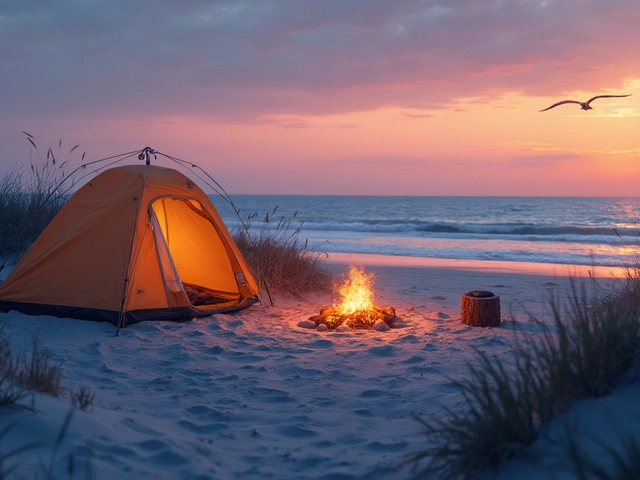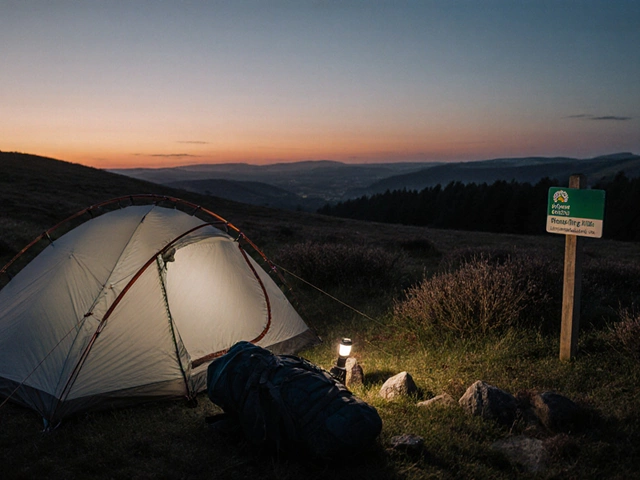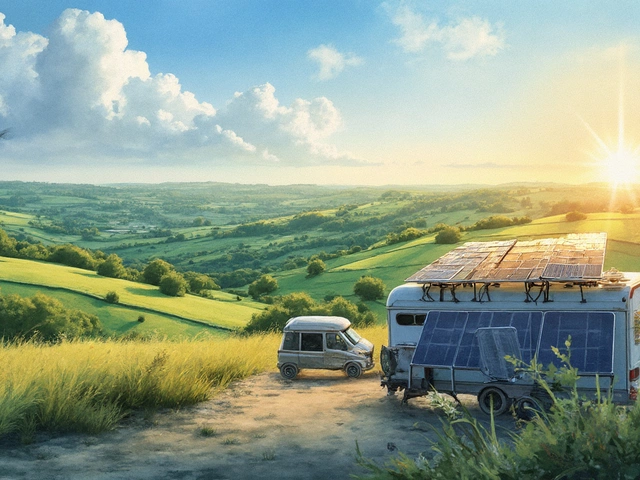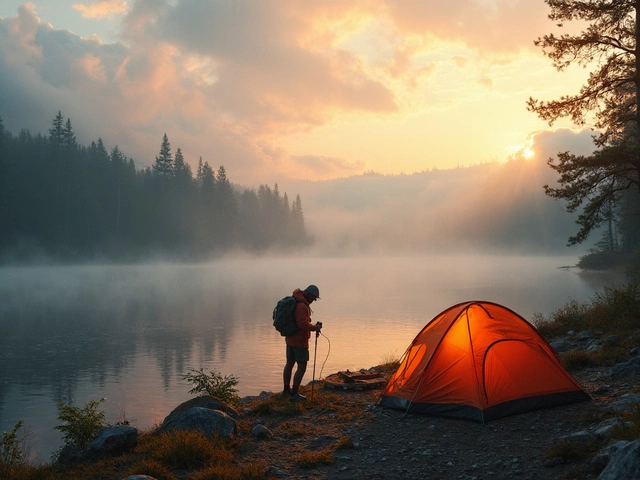If you’ve ever thought about parking up for weeks or even months at a caravan park, you probably hit the same question as everyone else: how long can you actually stay before you get the boot—or before it gets complicated?
Truth is, there’s no single answer. Most caravan parks set their own rules, but there are some common patterns. Holiday parks usually cap stays at around 28 days (that’s four weeks), mostly because of local regulations or their own policies. They want a steady flow of new holidaymakers, not permanent residents.
Saying that, there are parks designed especially for longer stays, sometimes called ‘residential parks’ or ‘lifestyle villages.’ These places might let you stick around for months, even year-round. The difference? They’re licensed differently, often with stricter standards for safety, utilities, and tenancy rights. You can’t always just show up and extend your stay forever; sometimes you’ll need a long-stay contract.
- Typical Maximum Stay Limits in Caravan Parks
- Why Caravan Parks Set Length-of-Stay Rules
- What Counts as ‘Residential’ vs. ‘Holiday’ Stays
- State and Local Laws That Change the Game
- Tips for Long-Term and Full-Time Caravan Living
- Finding the Right Park for Your Length of Stay
Typical Maximum Stay Limits in Caravan Parks
If you're wondering how long you can stick around at most caravan parks, you won't get one straight answer everywhere, but there are some clear trends. Caravan park managers usually set a maximum stay limit because of zoning, local council rules, and business needs. Usually, you’ll see stays capped at 28 days, especially in parks aimed at short holiday trips.
Here’s a practical look at common stay limits you’ll see in Australia and the UK:
| Country | Average Maximum Stay | Notes |
|---|---|---|
| Australia | 28 days | Most holiday parks; some allow up to 3 months if less busy |
| UK | 21–28 days | Standard for holiday parks; privately owned sites may offer longer |
| Residential Parks (AU/UK) | 365 days | Year-round; special licensing, often higher cost and longer contracts |
You’ll notice that short-term parks almost always have a limit of 3–4 weeks, while some rural or privately-run sites might bend the rules in the off-season, letting you stay for a whole season if things are slow. But don’t bet on it—it depends on their license and insurance.
If you overstay the limit, most parks will either ask you to leave or make you check out and check in again under a new booking, which can be a pain and doesn’t always work as a loophole.
Always ask about the real maximum stay before you settle in. Some parks on the coast or big tourist spots are way stricter, especially during holidays. If you need a longer base, look for parks with dedicated long-term or residential spots—they spell out their rules from the start.
Why Caravan Parks Set Length-of-Stay Rules
Ever noticed park owners rarely let people stay as long as they please? There are some real reasons behind it, and it’s not just about keeping spots open for newbies. For starters, a lot of rules are set by local councils or state governments. In some places, if a caravan park lets someone stay more than a set number of weeks—usually about 28 days—the park starts being treated more like rental housing than a holiday spot. That changes the type of license the park needs, adds a whole load of legal requirements, and can complicate their insurance.
Parks also set these limits to keep things simple for themselves. Shorter stays mean less wear-and-tear on the facilities, fewer arguments about who gets what site, and less risk of someone trying to claim squatter’s rights. The last thing a park wants is a legal mess or a backlog of people who won’t move on.
To give you an idea of how these limits look in practice, check out this quick table:
| Location | Typical Stay Limit | Reason |
|---|---|---|
| Queensland, Australia | up to 42 days | State law treats extended stays differently |
| UK Holiday Parks | 28 days max | Compliance & tourism regulations |
| Western Australia | 3 months (some parks) | Mix of park policy and council rules |
| New South Wales | 180 days per year in non-residential parks | Planning law restrictions |
One more thing—parks that set longer limits sometimes have to charge more or offer fewer holiday perks just to follow the extra rules. It’s all a balancing act between serving travelers and keeping the business above board.
If you’re planning a long stay, always ask the park manager about their rules. And keep in mind: what works in one state (or even one town) can be totally different in the next.
If you really need to stay somewhere long term, look for spots marked as caravan park or residential park rather than holiday-only parks. These are set up for long-haul stays and won’t surprise you halfway through with an eviction notice.
What Counts as ‘Residential’ vs. ‘Holiday’ Stays
This is where things get tricky if you’re planning a long stint in a caravan park. Not all parks are made for living in long-term, and there’s actually a clear split between what the law calls ‘holiday’ stays and ‘residential’ or permanent ones. Here’s the lowdown.
When you book into a regular caravan park for a holiday, you’re usually there just for a few days or weeks. These sites are set up for short-term guests, like families on vacation or road-trippers. They stick to limits—often 28 days—so they don’t cross over into being a residential property (which means bigger rules kick in).
A caravan park with ‘residential’ approval is a whole different ball game. These parks have jumped through lots of legal hoops so people can actually live there full-time. They’ll have better hookups (for water, sewer, electricity), stricter safety checks, and sometimes even on-site managers who treat it more like a community.
Here’s what usually separates the two:
- Holiday Parks: Designed for short-term stays. Maximum stay is usually capped at 21–28 days. Facilities might be simpler, and you’ll often hit a hard limit if you try to book for months at a time. Holiday parks don’t want to get tangled in tenancy laws.
- Residential Parks: Set up for people who want to stay months or years. Some even let you put down permanent roots, get your mail delivered, and vote from the address (yeah, some folks do!). Their sites might be bigger and more private too.
This comes down to local laws and how the park is licensed. For example, in the UK, Statutory Holiday Parks can’t let anyone stay more than 28 days without a break. In Australia, New South Wales parks must have a residential site licence to take permanent tenants or risk big fines.
Check out a quick comparison in the table below:
| Type | Maximum Stay | Amenities | Legal Rights |
|---|---|---|---|
| Holiday Park | Up to 28 days (typical) | Basic; often shared | No ongoing tenancy rights |
| Residential Park | 12 months or more | Private, year-round utilities | Covered by tenancy/residential park laws |
If you’re thinking about a longer stay, always ask the park manager what kind of license they have and whether they actually allow full-time residents. Sometimes you’ll see parks that call themselves ‘mixed use,’ meaning part holiday, part residential—but even then, most have zoning rules to follow and can’t let everyone go permanent.
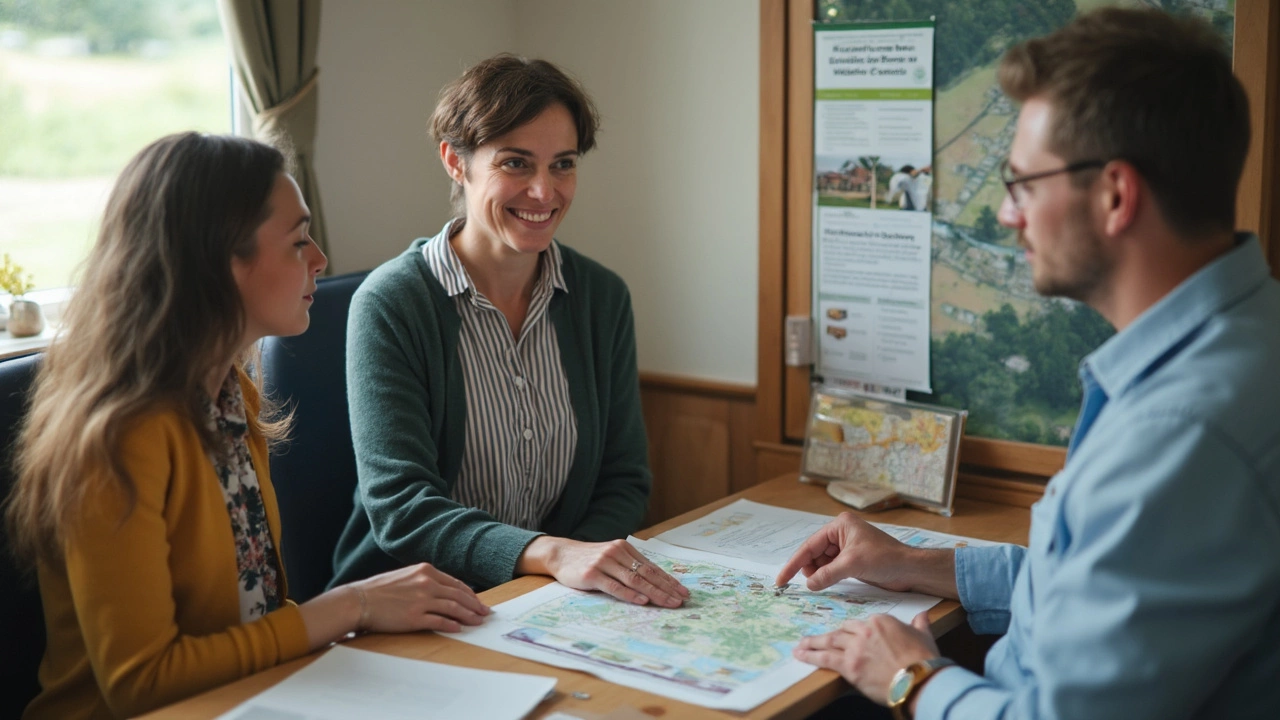
State and Local Laws That Change the Game
When you’re thinking about staying long term in a caravan park, local rules aren’t just red tape—they actually decide what’s possible and what’s not. In Australia, for example, most states treat ‘holiday parks’ very differently from ‘residential parks’ in their laws.
Some councils place a hard limit on how long you can stay. For instance, in New South Wales, the law says you can’t stay longer than 180 days in a holiday park each year, while Western Australia is usually stricter—most shires only allow up to 3 months before you have to move on. Victoria and Queensland have similar limits, but a few parks get around these by securing specific permissions for long-term or even permanent stays.
Here’s a quick look at a few real examples:
| State | Holiday Park Max Stay | Residential Option? |
|---|---|---|
| NSW | 180 days per year | Yes (different license) |
| WA | 3 months (often max) | Yes, in some parks |
| QLD | More varied, usually 4-8 weeks | Yes, but rarely |
| VIC | Up to 60 days (typical) | Some long-term options |
But that’s just the start. If you stay too long in a holiday park, you might lose your ‘tourist’ status and run into tenancy rules, which means the park could legally owe you more rights—something most owners want to avoid. The main goal for parks is to keep their ‘tourist’ classification for tax and zoning perks, so many are tough on enforcing limits.
Before you book a months-long stay with your caravan park, always check the park rules up front and read any local council regulations. If you want to stay put for half a year or longer, ask if the park’s licensed for residential use—otherwise, you could be told to move on with little notice.
- Call the local council or check their website—they’ll usually spell out max stay rules.
- Ask the park manager how they handle guests staying longer than posted limits.
- Don’t assume just because you got away with a few months last time that it’s always allowed—laws change and enforcement varies by area.
Tips for Long-Term and Full-Time Caravan Living
If you’re planning to stay put in one spot for ages, life in a caravan park gets a bit different from a quick getaway. You’ll face plenty of day-to-day stuff most holidaymakers never think about. Ready to make it work? Here’s what you need to know.
- Caravan park rules always change between spots. Before committing, grill the managers on the exact maximum stay. Some places stretch to 3, 6, or even 12 months if you ask upfront.
- Ask about site fees for long-term stays—they’re usually cheaper, but check what’s actually included (power, water, Wi-Fi, garbage collection).
- Make sure your caravan or motorhome is up to scratch. Many parks want rigs newer than 10 years. Some will demand regular safety checks, especially in residential parks.
- Winter and summer rates can be wildly different. If you plan to hunker down all year, ask for a breakdown across seasons.
- Storage can be a headache. Long-termers collect stuff, so look for parks with lock-up sheds or at least bigger sites.
- You’ll need a mailing address. Some parks offer a postal service or let you use theirs. If not, check out Australia Post’s Parcel Collect or a PO Box.
- Blending in matters. Long-term residents usually keep things tidy, make friends, and respect quiet hours. Some parks even run community BBQs or meetings.
- For longer spells, don’t forget about insurance—double check your policy covers long-term caravan living, not just travel or holidays.
Here's a quick look at price differences and what's commonly included with long-term site fees (based on 2024 numbers in Australia):
| Site Type | Weekly Fee (AUD) | Power | Water | Wi-Fi | Pet Friendly? |
|---|---|---|---|---|---|
| Holiday park (short stay) | $250–$400 | Included (limits apply) | Included | Usually, but limited speed | Often yes, check rules |
| Residential park/long stay | $180–$320 | Metered, pay for what you use | Included | Available, better speed | Usually yes |
Finally, stay sharp on park policies—they sometimes update with little warning, especially after busy seasons or due to local council changes. If you don’t want surprises, get every agreement in writing before you roll in the van for the long haul.
Finding the Right Park for Your Length of Stay
So, you want to chill out in a caravan park for more than just a quick holiday. The secret is picking the right spot from the start. Not all parks are on the same page about long-term stays, and choosing wrong can get you stuck or even asked to leave early. Here’s what matters when you’re hunting for the perfect base:
- Check the type of park. A lot of people mix up ‘tourist’, ‘holiday’, and ‘residential’ caravan parks. If you’re planning on staying longer than a month, focus on those that advertise long-term or residential options. Ask up front—they’ll usually say on their website or booking info.
- Look into local council laws. Some towns don’t let anyone stay over 60 days at a regular holiday park. Other places have no rules—or the park has a special license for long-term guests. It’s worth asking before you show up, especially if you’re eyeing a specific region.
- Compare facilities. If you’re living there for weeks or months, you’ll need more than just a barbecue. Reliable laundry, mail options, good showers, and on-site management can make or break your stay.
- Ask about pricing. Some places have weekly or monthly deals much cheaper than their nightly rate. Others stack up extra costs for power, pets, or more than two people. Always check the fine print, so there are no nasty surprises down the road.
- Scout for community. Some long-term parks have a real sense of neighborhood, while others are just a parking lot. If you’re looking to settle in, it’s worth dropping by, saying hi, and seeing if the vibe matches what you want.
Here’s a quick look at what stay limits and policies can look like at different types of parks in Australia, based on info from major brands and local councils:
| Park Type | Typical Max Stay | Special Requirements |
|---|---|---|
| Holiday/Tourist Park | 28 days (sometimes up to 60 days in off-peak) | No residential rights, usually proof of travel booking required |
| Residential/Lifestyle Park | 6-12 months, often with option to renew | Lease or long-stay agreement, background check |
| Mixed Parks (Holiday + Permanent Sites) | Varies – 28 days to year-round | Depends on available sites and council approval |
One last tip: always call or email before you show up. Rules sometimes change fast, especially after COVID and with new local laws popping up. If you lock in your length of stay in writing, you’ll save yourself a heap of hassles later.
